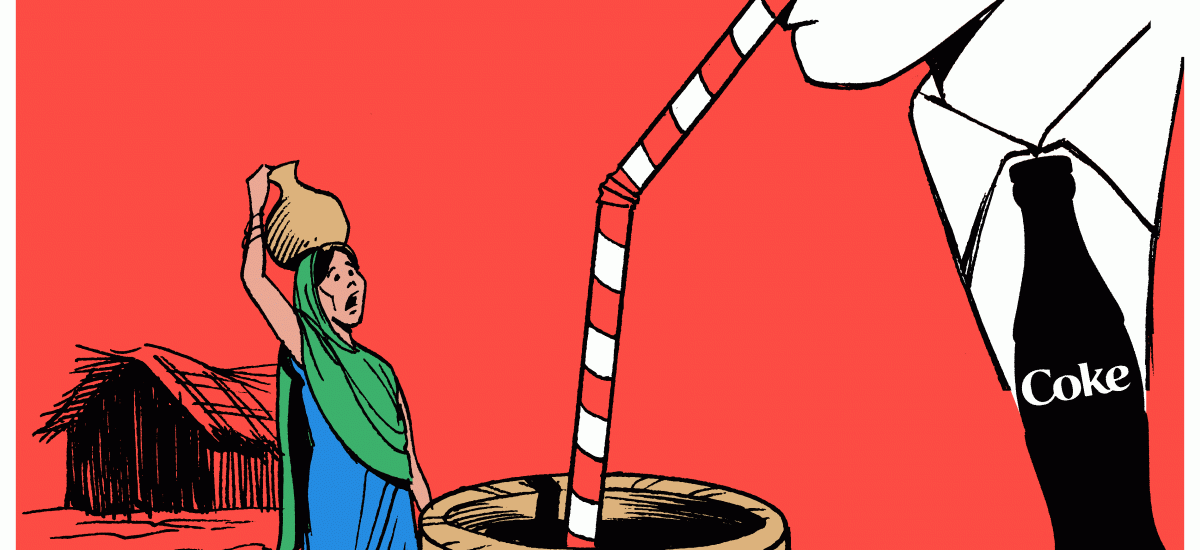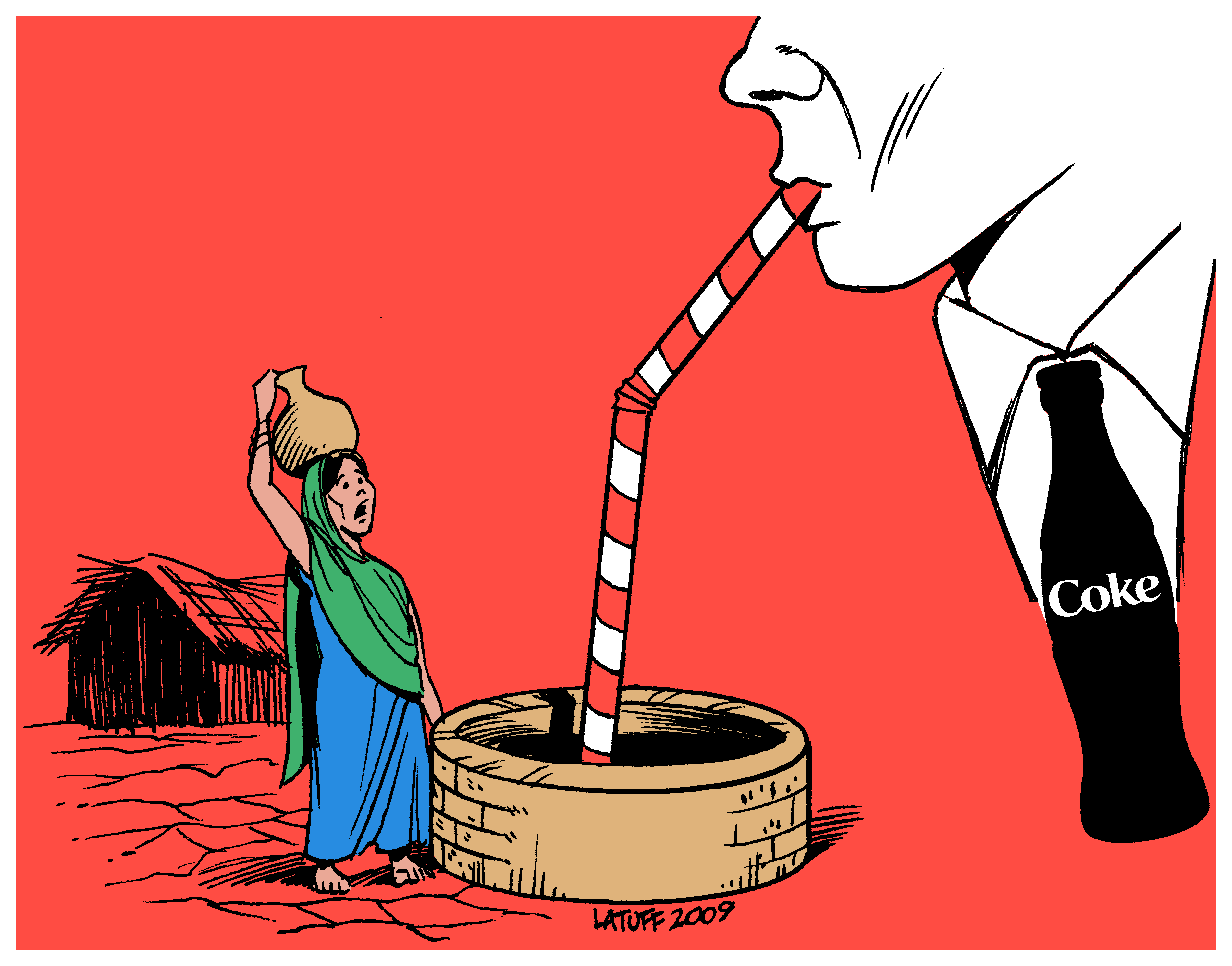Image courtesy Killer Coke
On August 17th 2015, the Coca Cola factory in Sri Lanka leaked diesel fuel into the Kelani River, polluting the water supply for millions of Sri Lankans living in suburban Colombo. The Coca-Cola Company is an American multinational company that is a global leader in the beverage industry. Although the company is a universally recognized, iconic institution, over the past few years, it has been involved in a number of unconscionable environmental issues, particularly in relation to its unsustainable water use practices. Several of these issues have impacted the environment in severe ways and thereby adversely affected the lives and livelihoods of millions of people who call the areas in which Coca-Cola chooses to manufacture its products, home.
Currently, Sri Lanka is asking for an apology and attempting to fine the company; however, most seem unaware of the adverse impacts that Coca-Cola could potentially cause, and in fact, have already caused in several other communities. One such community is Plachimada, a small fishing and agricultural village in the Palakkad district of Kerala, India. In 1999, the Government of Kerala invited a subsidiary of the Coca Cola company in India to establish a plant in Plachimada. Within two years, the residents of Plachimada began to feel the impacts of the factory, which included severe water shortages and water pollution. The story of what happened there is similar to what is happening in Sri Lanka today.
Coca Cola left Plachimada with dangerously high levels of cancer-causing cadmium and lead in the soil, which led to crop failures and further contamination of its precious groundwater. In response, the people were forced to start a grass-roots movement to stop the company from further exploiting and contaminating the natural resources of the area. Finally, in August 2006, the Government of Kerala and the State Food Authority banned the manufacture and sale of Coca Cola in Kerala alleging that further investigation found pesticides and harmful chemicals in the products. Events like these have occurred in other areas in the country, such as Wada in Maharashtra and Mehdiganj in Uttar Pradesh, and several other communities have opposed proposed Coca Cola facilities for similar reasons. The events in Plachimada may prove to have been more severe than what happened recently in the Kelani River; however, more often than not problems that began with water contamination were only a precursor to further violations, especially when left unregulated. Often, additional issues and hazards were discovered only after the facility was systematically investigated.
The Sri Lankan Government should take Kerala as an example and in doing so make an example out of the Coca Cola Company by taking a timely and strong stance against it. After the Plachimada crisis, the Government of Kerala took steps to draft the Kerala Groundwater (Control and Regulation Act) in 2002, which has since helped the community to protect and redevelop their groundwater resources. The Sri Lankan government should do everything in its power to protect its natural resources and its citizens. Currently the government is being pressured to reduce the fine that was imposed on the company and to settle the case in a manner favorable for Coca Cola. However, it is very important that we stand our ground to prevent Sri Lankans from suffering like the residents of Plachimada. It is also necessary that Coca Cola take responsibility for its mistake, especially since the company frequently attempts to project a image of environmental support, and has “green-washed” its products—even using the poster child of climate change as a façade. This is why the government should fine Coca Cola a well-deserved and significant fine to deter similar irresponsible behavior in the future and set up environmental policy regulations to prevent companies from taking advantage of and polluting our country’s resources.
It is equally important that the Government of Sri Lanka should inform the public of the facts of the incident and demonstrate their interest in protecting the citizens of this country. Residents of Colombo and suburbs are not fully aware of the health implications of this incident.
Coca Cola should cover the full reparatory cost of cleaning the water supply in addition to a penalizing fine and permit environmental authorities to test their systems periodically. If Coca Cola does not comply, it would be worth considering the option of banning the manufacturing of Coca Cola in Sri Lanka to prevent our country from suffering from the same damages as Kerala.
An apology hardly suffices because let’s face it – The Coca Cola Company might think that “Coke adds Life” (1976), but we know better!
Ariesha Wikramanayake is a final year undergraduate student at University of Miami, Coral Gables, Florida. She is double majoring in Biology and Ecosystems Science and Policy.
###
References:
Chacko, Robin. “The Hindustan Coca-Cola Beverages Pvt. Ltd – The Plachimada Fiasco.” Jananeethi. (2005): 7-32. Print.
Government of Kerala. Ministry of Micro, Small and Medium Enterprises. State Profile of Kerala 2010-2011. Thrissur: MSME- Development Institute, 2011. Web.
Mathews, Rohan. “The Plachimada Struggle against Coca Cola in Southern India.” DPH. Intercultural Resources.
Operandi, Modus. “Water: the Coca Cola Company in Kerala.” Openrim.org. (2007): Web.
“Case against Coca-Cola Kerala State: India.” Righttowater. The Rights to Water and Sanitation. Web.
“Coke’s Crimes in India.” Coke’s Crimes. Killercoke.org. Web.
Koonan, Sujith. “Legal Implications of Plachimada.”International Environmental Law Research Centre. (2007): 1-17. Print.
“Coca-Cola: News & Events.” Coca-Cola Enterprises . The Coca-Cola Company.
Other References Not Cited:
“Indians force Coca-Cola bottling facility in Plachimada to shut down, 2001-2006.” Global Nonviolent Action Database. Swarthmore College.
Surendranath, C. “Coca-Cola: Continuing Battle in Kerala”. India Resource Center, 10 Jul 2003. Web.
Majumder, Sanjoy. “Indian state bans Pepsi and Coke.”British Broadcasting Corporation [New Delhi] 9 August 2006.


